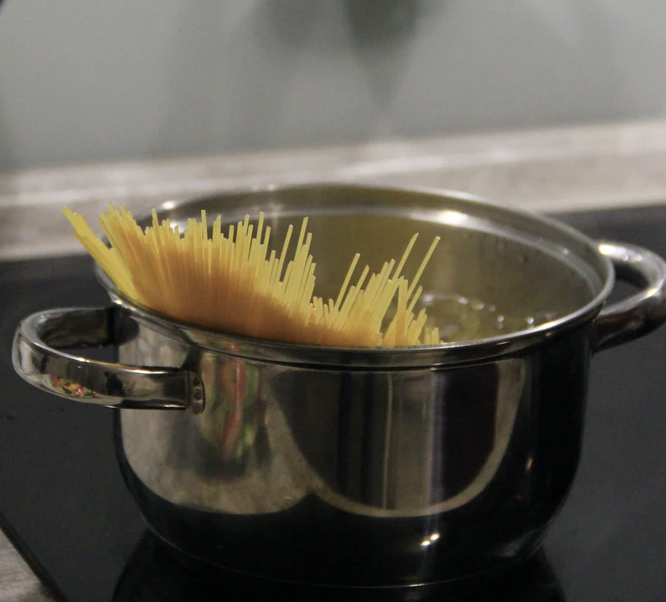Pasta. An affordable meal that many college students likely find themselves making often throughout the semester. A dish that is so simple, yet so delightfully delicious. But, there are a few tips and tricks to enhance and improve this staple dish. Here is an easy homemade sauce recipe—its simplicity will be sure to surprise you—as well as a few other pasta hacks.
Simple Homemade Marinara Sauce
Making a sauce from scratch may seem like a lot of work and pretty intimidating. In reality, creating sauces isn’t as complicated as one might think. Whether you’re often running low on time or are just getting into the cooking scene, try this simple and delicious marinara sauce that can be made with only a few simple ingredients.
What You’ll Need
- 1 28 oz can whole peeled tomatoes
- 1 medium yellow onion, peeled and halved
- 2 large cloves of garlic, peeled
- 2 tablespoons extra-virgin olive oil
- 1 teaspoon dried oregano
- pinch of red pepper flakes
- salt to taste
- grated parmesan cheese
What You’ll Do
- In a medium saucepan, combine tomatoes, halved onion, garlic cloves, olive oil, oregano and red pepper flakes.
- Bring sauce to a simmer over medium-high heat, then lower the heat to a steady simmer for about 45 minutes. After about 15 minutes, stir occasionally and crush tomatoes within the pot.
- Remove pot from heat and remove onion. With a fork, smash the garlic cloves and leftover onion pieces and stir into sauce.
- Add salt to taste.
Elevate Store-Bought Sauces
Adding fresh ingredients is a quick and easy way to step up any store-bought sauce. To keep things simple, try to use ingredients you likely may already have lying around your kitchen. Chop, dice, and slice some fresh garlic, onion and tomato to add a bit of fresh flavor and texture. If available, VALLEY recommends adding a handful or two of fresh spinach or mushrooms. This will not only add some veggies to your dish but also cook down with the sauce and its flavors.
Although store-bought sauces are already likely flavored and seasoned, incorporating fresh herbs is yet another way to add even more flavor and take the sauce to the next level. If possible, growing a small herb plant in the kitchen such as basil or rosemary is a helpful and nice way to easily grab a few fresh sprigs to add while cooking. Adding dried herbs and spices will still get the job done if fresh herbs aren’t always readily available. If using dried herbs, VALLEY suggests adding a bit of onion and garlic powder, rosemary, thyme and basil.
Pasta Tips

One-pot meals are efficient on so many levels. Not only are they fast and easy, but they require less clean-up afterward. Whether it’s cooking your meal entirely altogether or cooking the pasta separately before finishing everything together back in one pot, this strategy is an absolute timesaver. Plus, having everything cook and finish up all in the same pot allows for the flavors and ingredients to combine and blend together.

Lastly, start saving some of your pasta water for the end if you don’t already. Before combing your pasta with the sauce, slowly add a little bit of pasta water to the sauce and stir until combined. This pasta water is not only salty, starchy and adds flavor, but it helps thicken the sauce and hold the pasta together.




